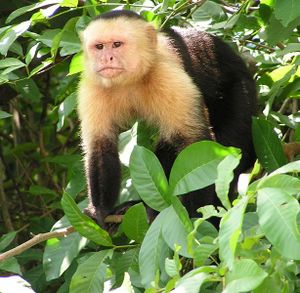Sex, Handedness and the Brain

I have commented before on my longstanding interest in handedness and laterality, as well as gender differences in the brain. A recurrent question when we look at both of them is whether culture has any role in the development of either. Are some of the differences in male and female brains driven by educational opportunities and cultural expectations, or is there something innate about them?
A recently published paper in PLoS ONE reports finding both sex and handedness influences on the relative size of the corpus callosum in Capuchin monkeys.
Capuchin monkeys are playful, inquisitive primates best known as the “Organ Grinder” monkeys. They have great manual dexterity, complex social behavior, and cognitive abilities. The new research now shows that just like humans, they display a fundamental sex difference in the organization of the brain, specifically in the corpus callosum, the band of white matter that connects the two hemispheres of the brain.
In the study, thirteen adult capuchins underwent magnetic resonance imaging of the brain to determine the size of their corpus callosum. The monkeys were later given a task to determine hand preference. The authors’ results led them to conclude that, as in humans, male capuchins have a smaller relative size of the corpus callosum than females, and right-handed individuals have a smaller relative size of the corpus callosum than left-handed individuals.
As the two hemispheres show greater independence of function, the relative size of the corpus callosum is expected to be smaller. This has been documented in humans, and same pattern was found in capuchins.
This finding may be related to hemispheric specialization for complex foraging tasks that require the integration of motor actions and visuospatial information. In the wild, capuchin monkeys live in trees as well as on the ground, and they are known to be very good at capturing small swift prey such as birds, lizards, and squirrels.






